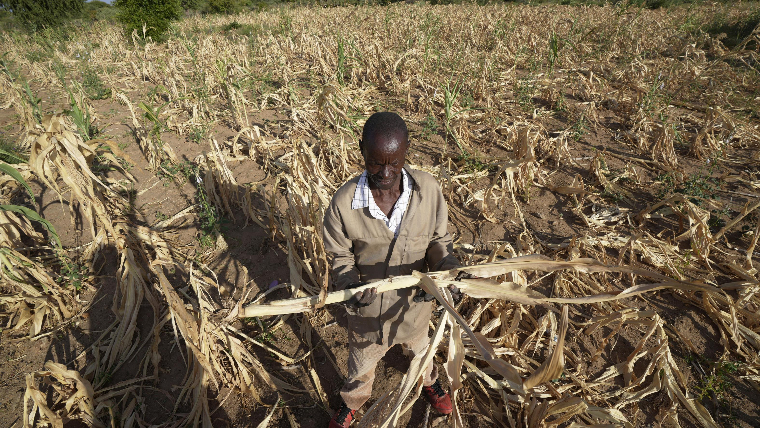 In the last week, Zimbabwe, following both Malawi and Zimbabwe, has declared a drought emergency, requesting US$2 billion in support for purchasing food supplies in the face of large predicted deficits. The total cereal harvest is expected to be around one million tonnes, about half amount of the previous year, leaving a big gap to meet total demand, meaning that cereal imports will be essential.
In the last week, Zimbabwe, following both Malawi and Zimbabwe, has declared a drought emergency, requesting US$2 billion in support for purchasing food supplies in the face of large predicted deficits. The total cereal harvest is expected to be around one million tonnes, about half amount of the previous year, leaving a big gap to meet total demand, meaning that cereal imports will be essential.
We have known that this was going to be an El Niño season for many months. There were early warnings, recommendations to plant drought resistant crops, suggestions to plan for the worst. And, unlike many climate predictions where there are more uncertainties, the impacts are well documented, with close correlations between El Niño events and maize outputs repeatedly seen. The consequences are now being felt all over the region.
El Niño events are not new. The major droughts of 1982-83, 1991-92, 2009-10, 2015-16 among others were all linked to El Niño. El Niño is a naturally-occurring phenomenon and emerges when surface temperatures in parts of the Pacific ocean increase. This has an impact on global circulation patterns and drought is usually experienced in southern Africa (while just to the north in east Africa El Niño years are unusually wet). Great droughts in the past have been retrospectively linked to similar climate anomalies back into the nineteenth century, although today’s accelerating climate change makes things worse.
This year, through a very uneven season, farmers have tried and tried to get a crop. I don’t know how many Western Union transfers I’ve done to pay for yet another round of seed after the last one failed due to another extended mid-season drought. Cropping results are patchy, depending on luck, timing and local micro-climatic conditions. Those with access to riverbank or vlei gardens or a small irrigation pumpset will fare better. This is a year when pfumvudza (no-till farming in pits) should have come into its own, with moisture conserved even if rainfall was minimal. But this again was not guaranteed, and many dug and dug to no avail.
All this is having a huge impact on food security and the World Food Programme reckons there are currently 2.7 million Zimbabweans in need of food, with many more expected in the coming months. The tobacco crop, essential for the incomes of many smallholder farmers these days, has been hard hit too with quality down and sales volumes depressed.
Like El Niño years before, this is going to be a tough period, as the predictions from FEWS NET starkly show. Luckily the previous years have seen relatively good harvests and many have stores of food to help tide them over, especially in the resettlement areas, but nevertheless many will be reliant on assistance. Most of this food will come from relatives who have food or funds, but government, private sector and international aid support will be important too.
Continued next page
(99 VIEWS)

